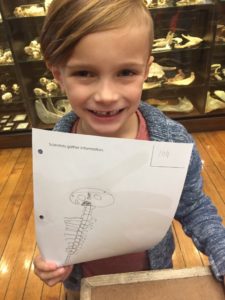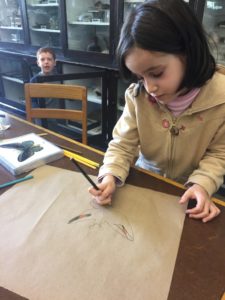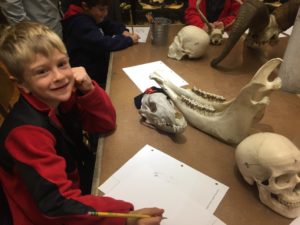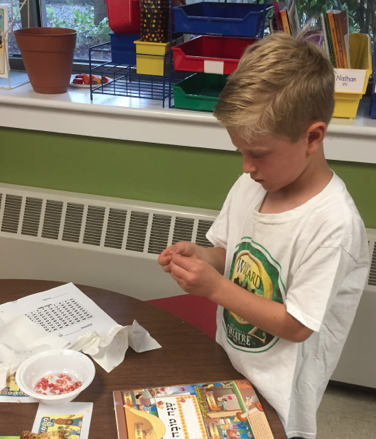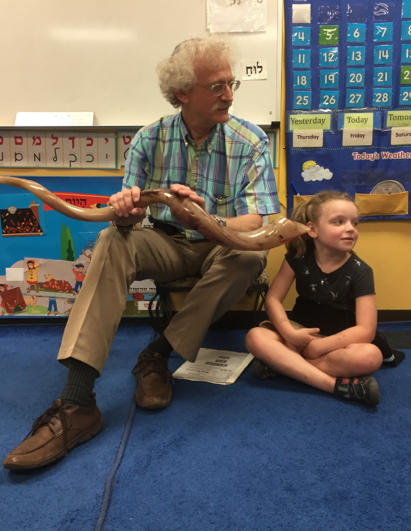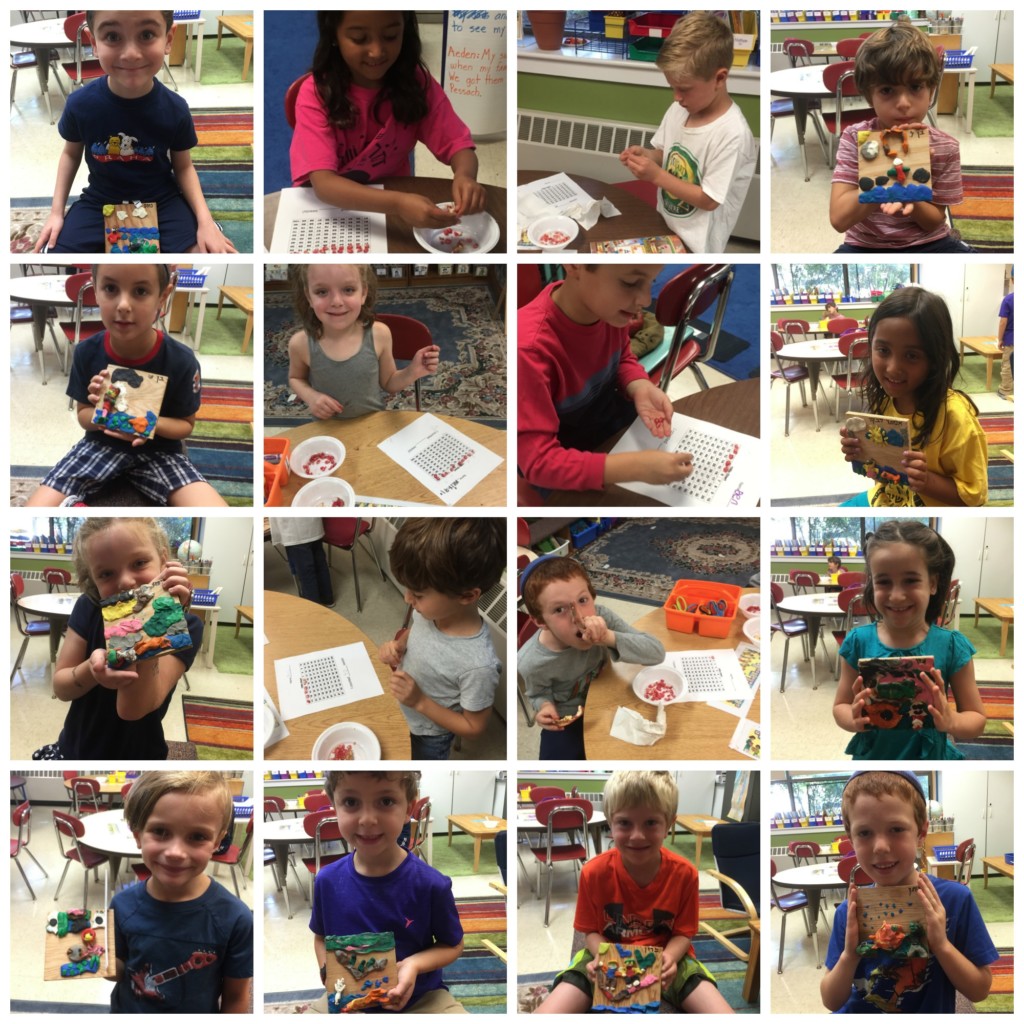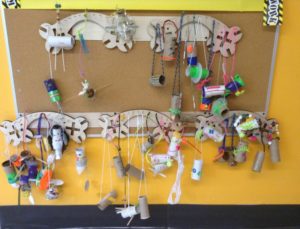Karen and I noticed early on that every time we used the projector our students were fascinated by making shadow puppets (who isn’t?). We decided to use this to our advantage and do something never done before in first grade and create an actual shadow puppet show.
Our show, “Under the Acacia tree” – “תחת עץ השיטה” is the culmination of our cross-curricular unit on the Jewish value of שומרי אדמה, Shomrei Adama – Guardians of the Earth. It is also our first-grade research project. The show’s backdrop is an Acacia tree surrounded by the hills of the Negev desert. Students worked together to create this pastel masterpiece. We borrowed two overhead projectors and hung them from the ceiling for backlighting. The results were breathtakingly beautiful.
This English/Hebrew puppet show is based on our research on endangered animals of the Negev desert. Together we learned about the plights of endangered animals, plus what we can do to make a difference. Each student researched one animal and created a poster about it. They worked very hard to research, take notes, and draw detailed illustrations of their animals.
After the performance, our students presented their research posters. We are so proud of their accomplishments!

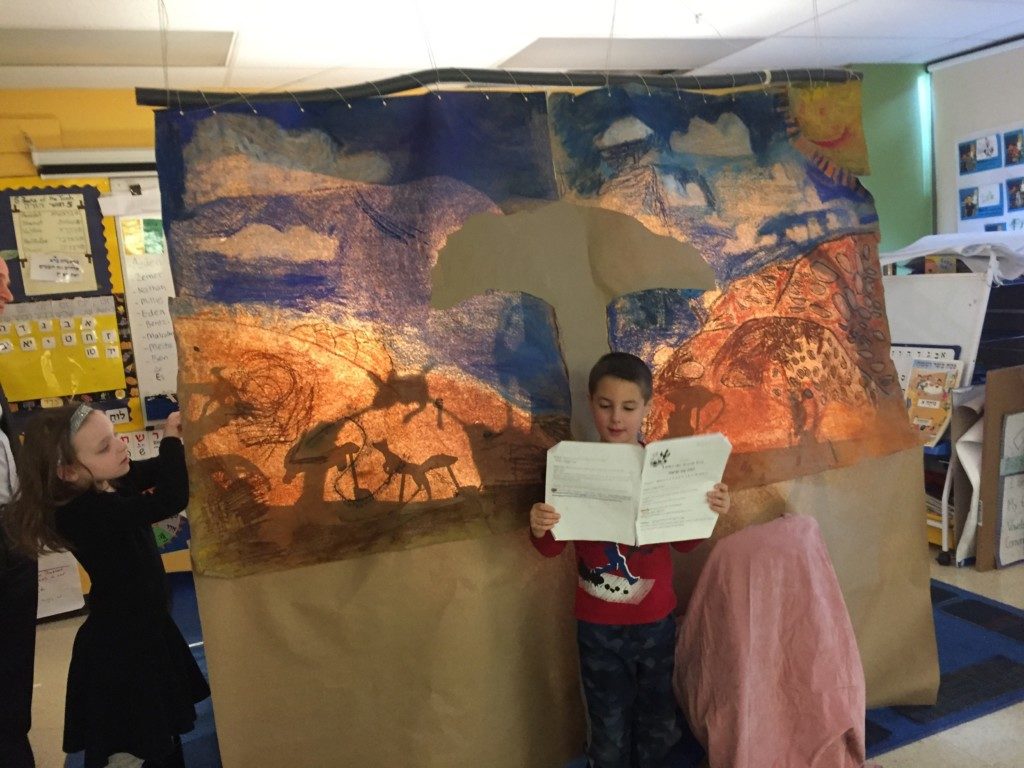

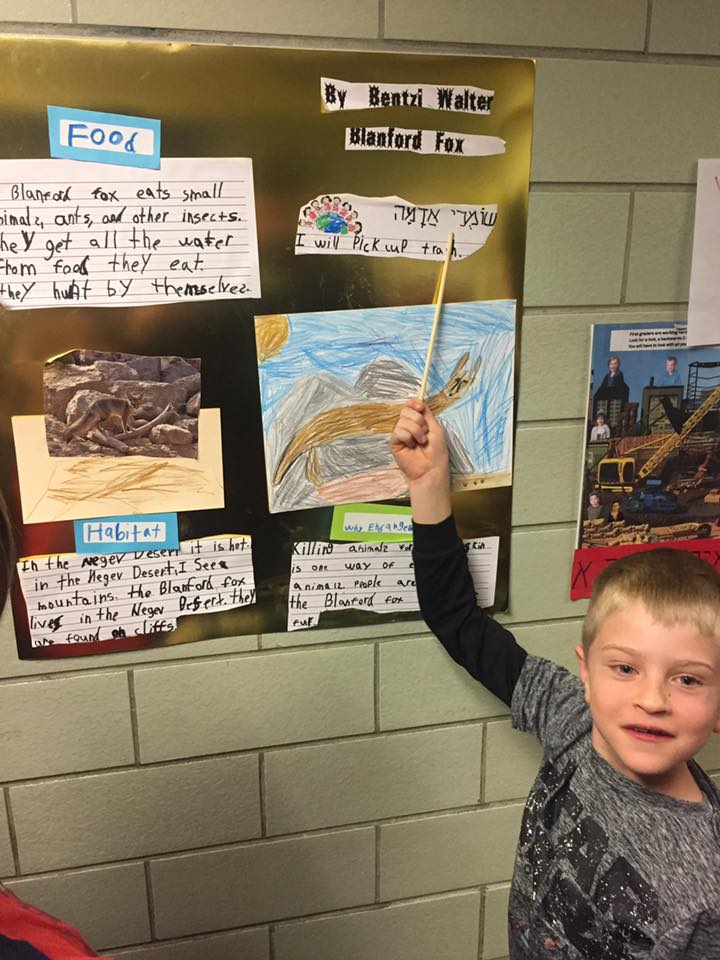
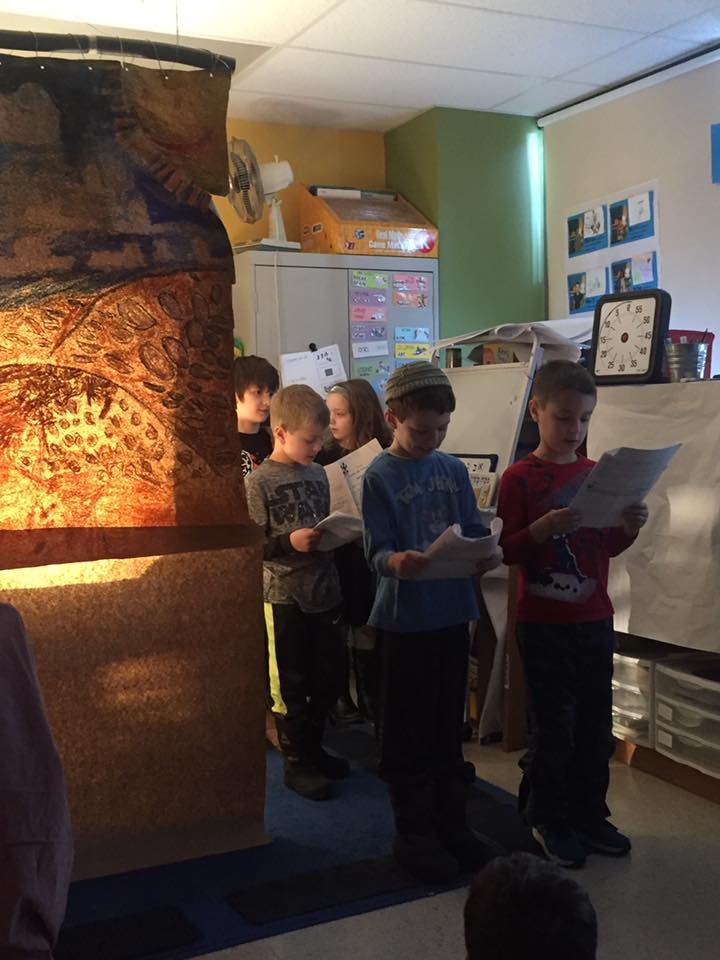



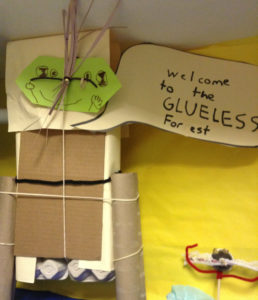
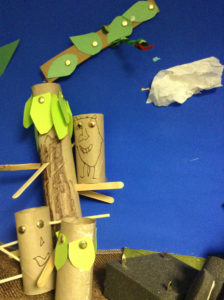
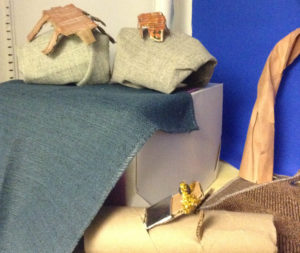
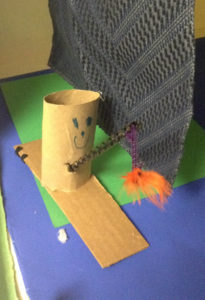
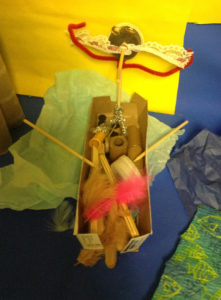



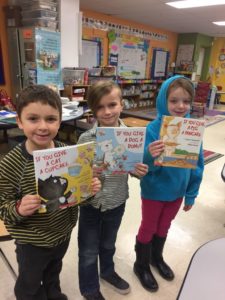
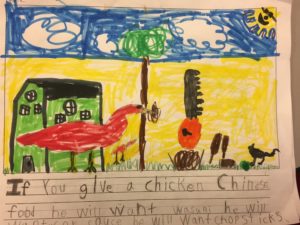
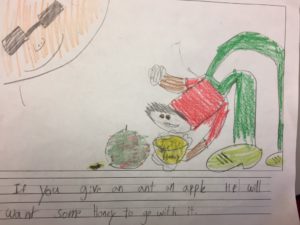

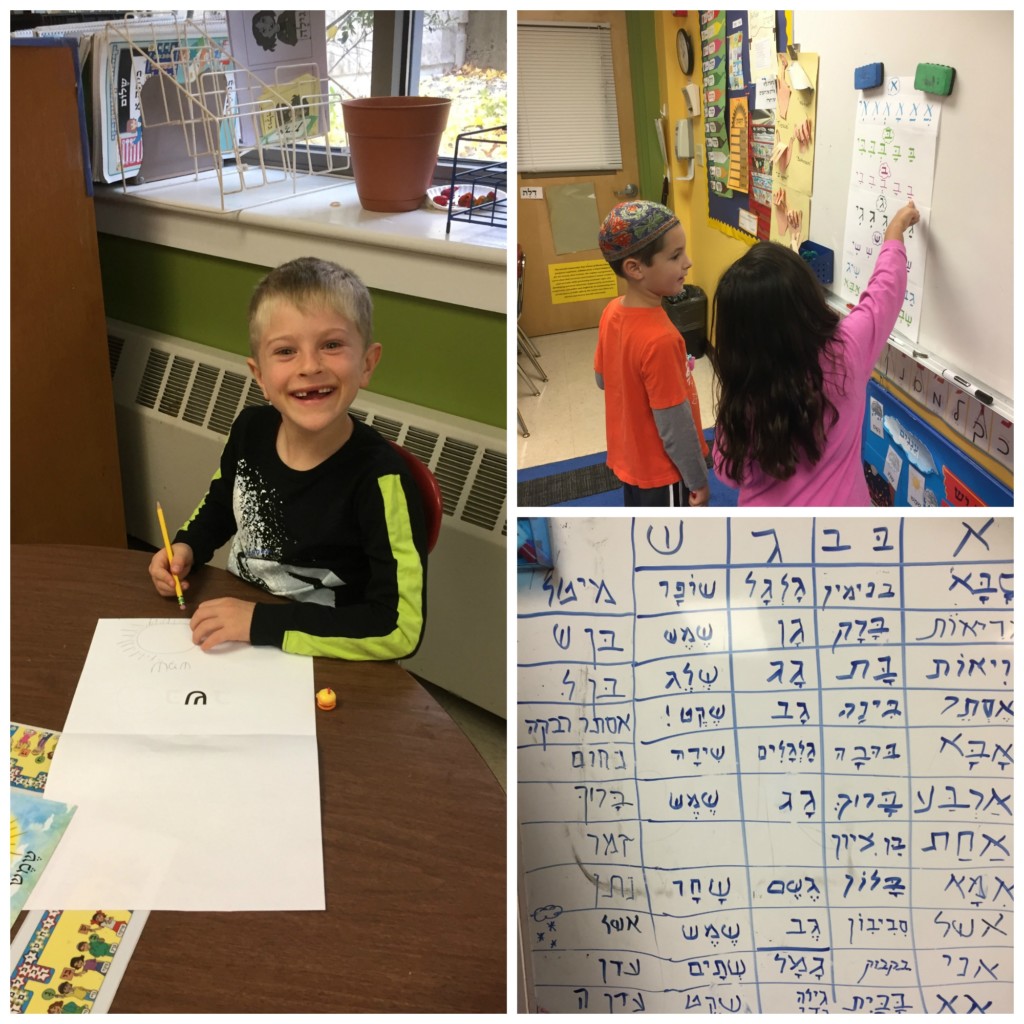
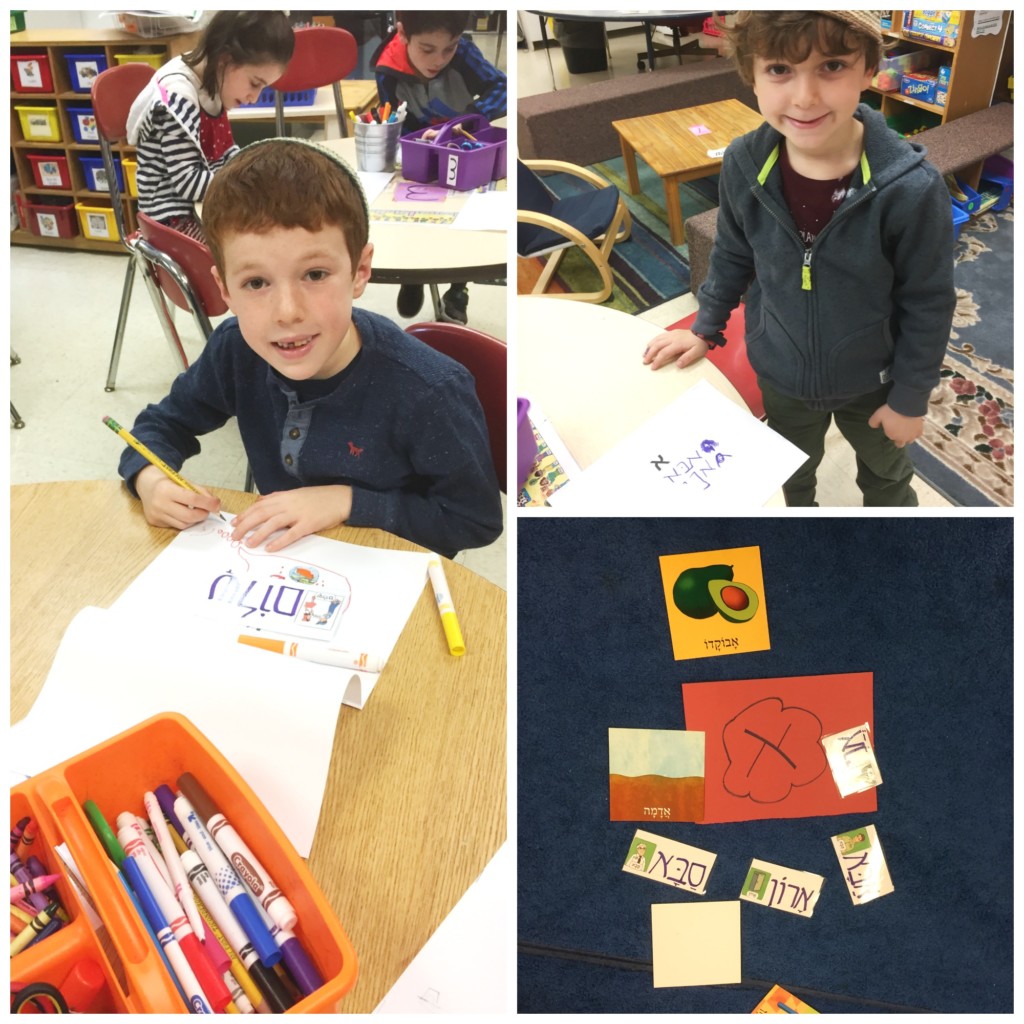
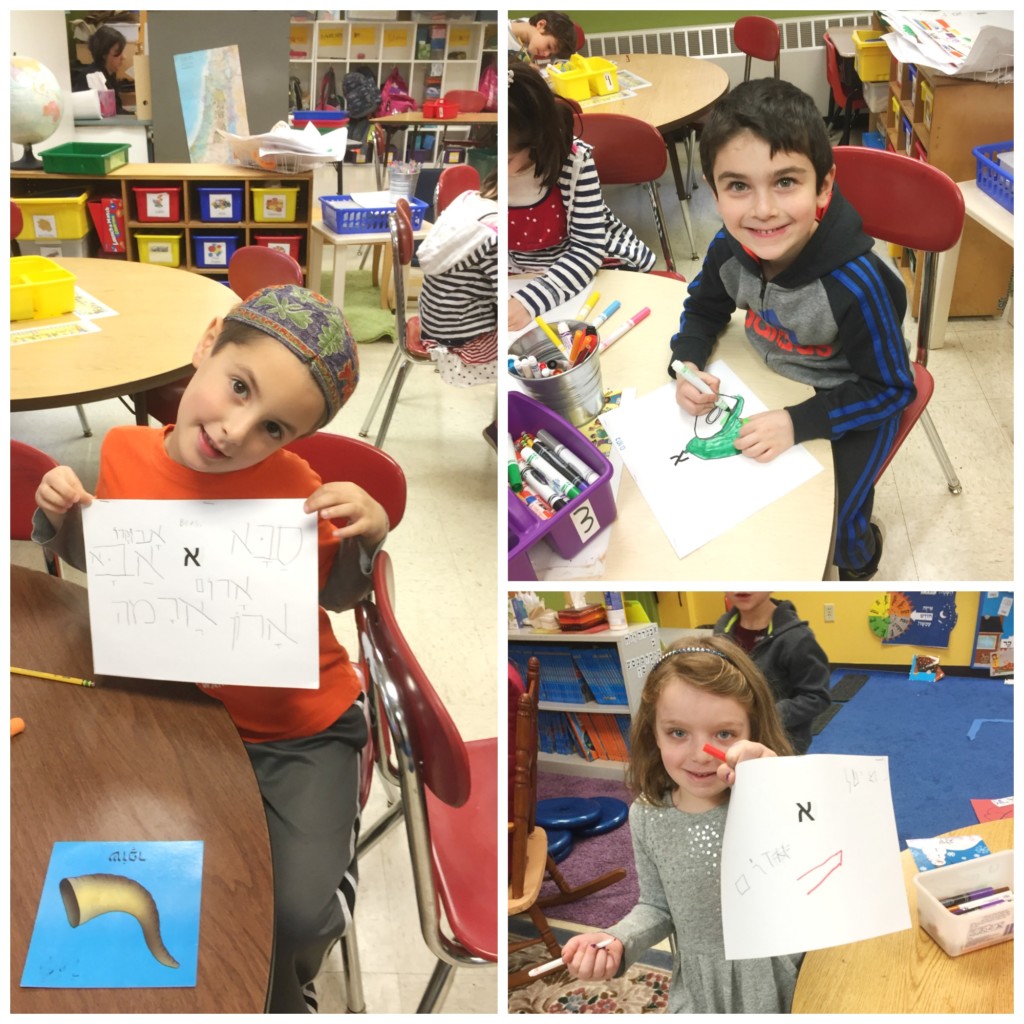
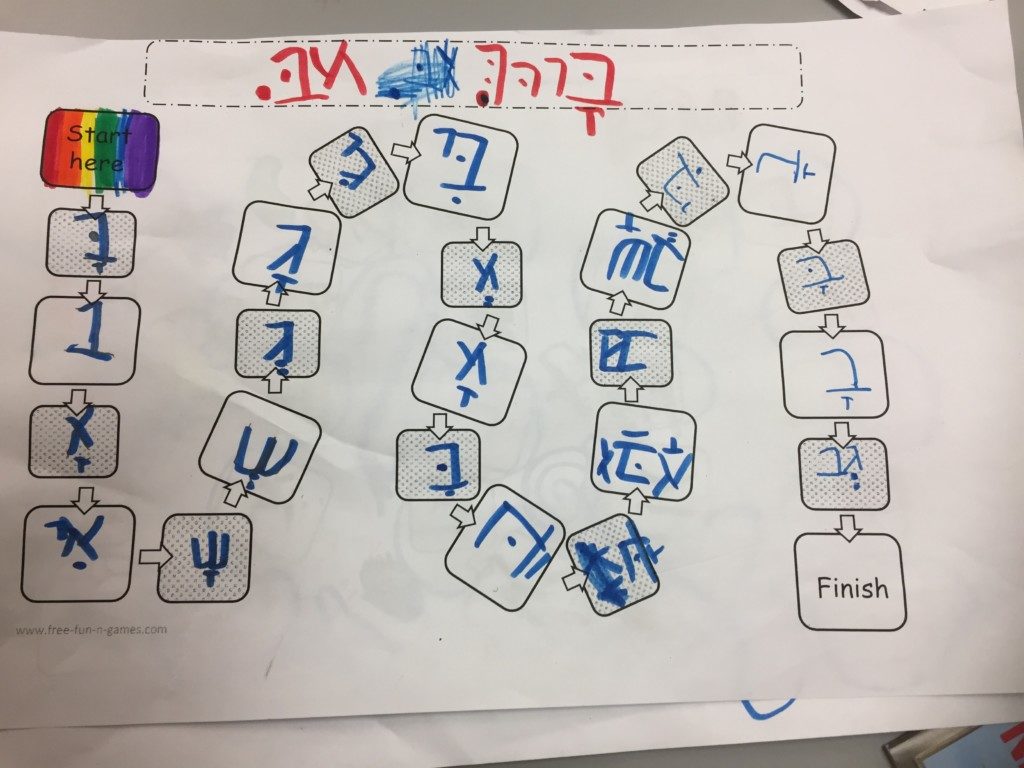

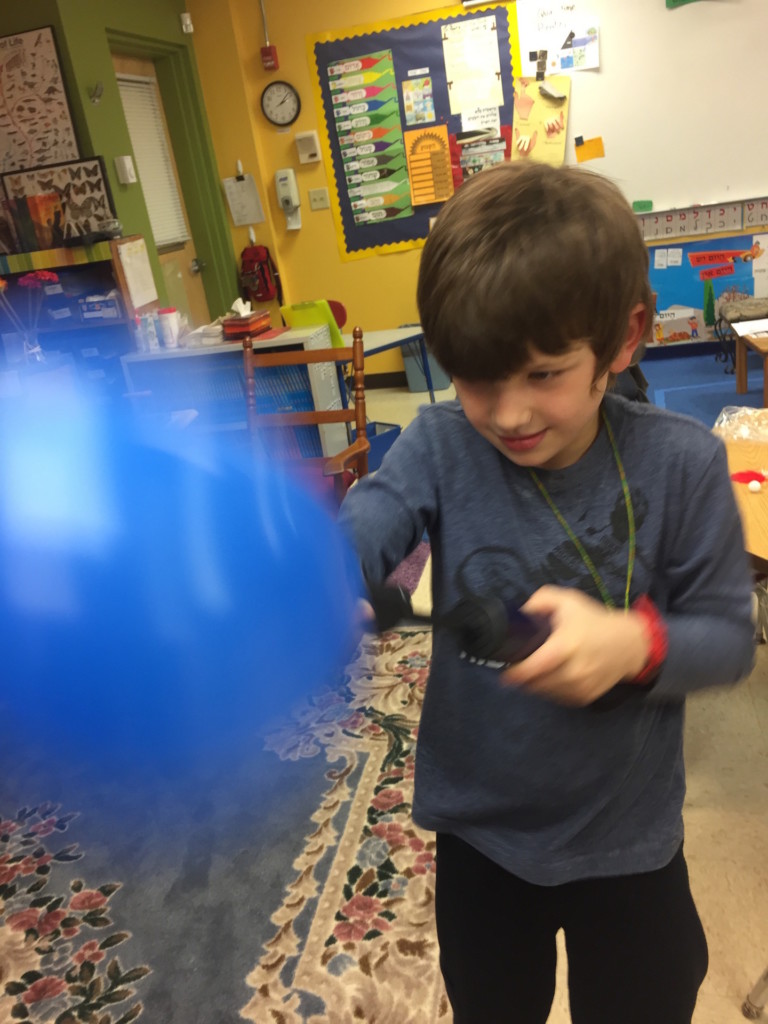
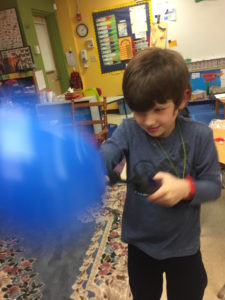
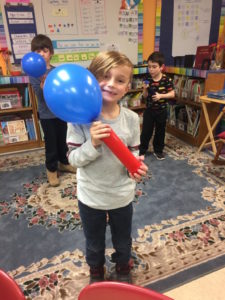
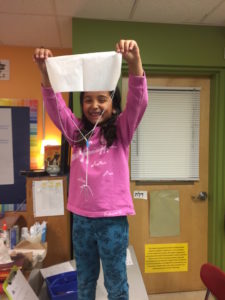

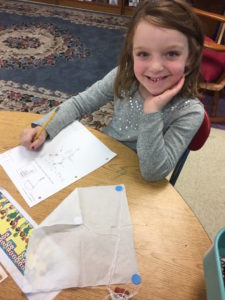
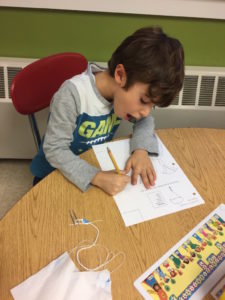

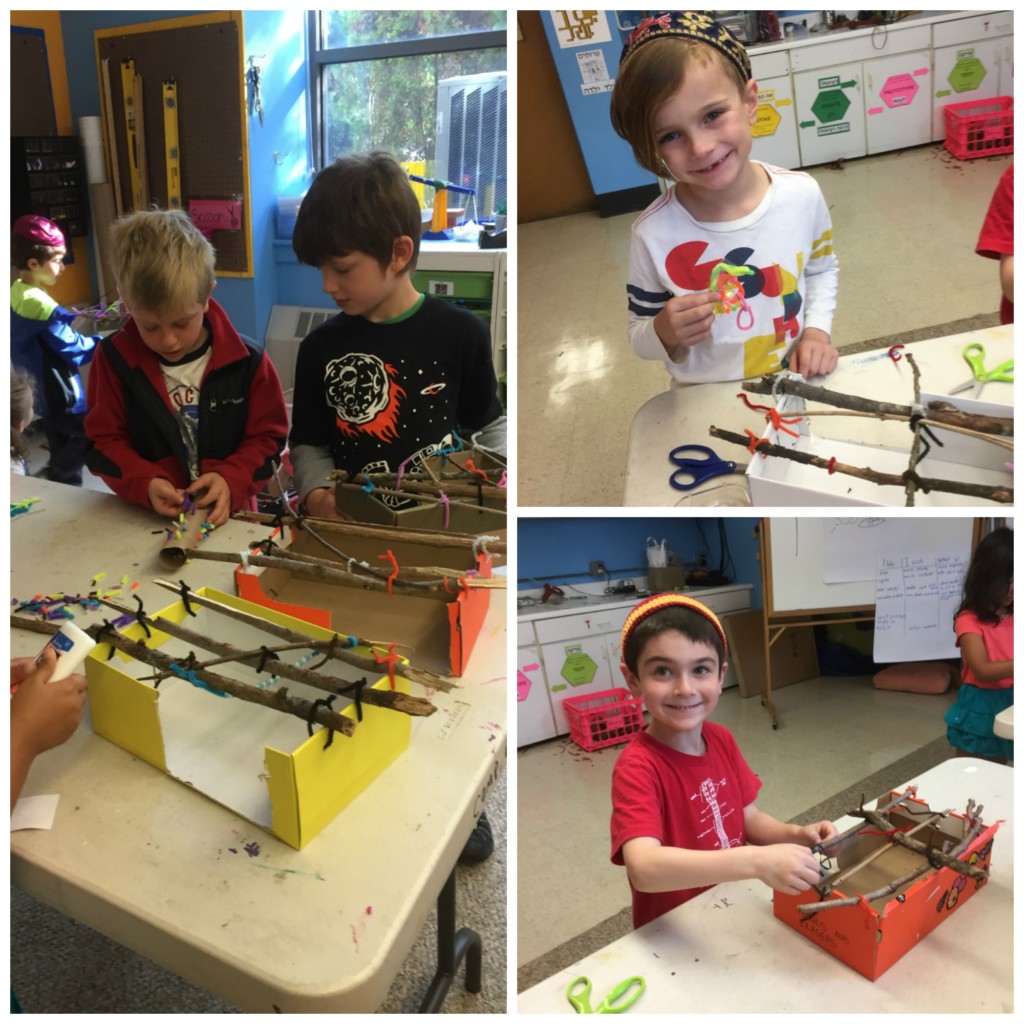


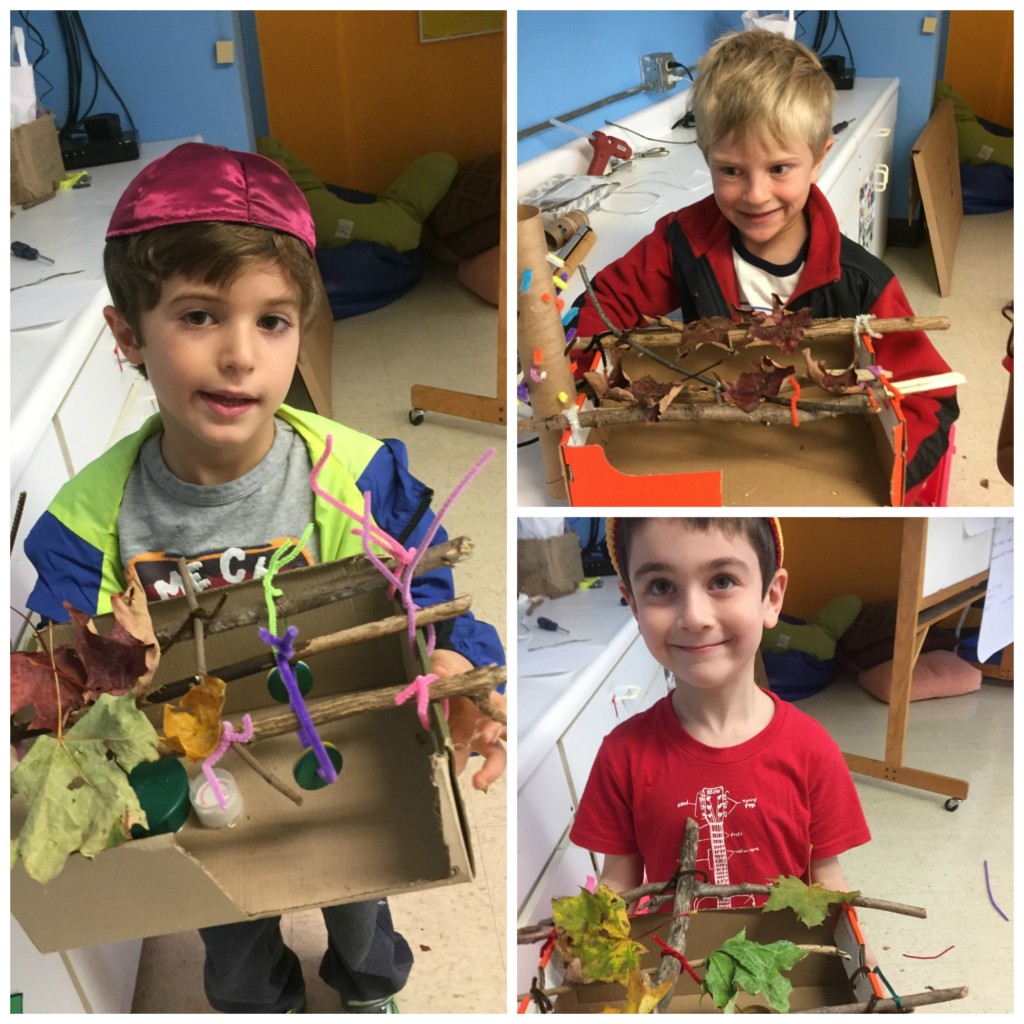
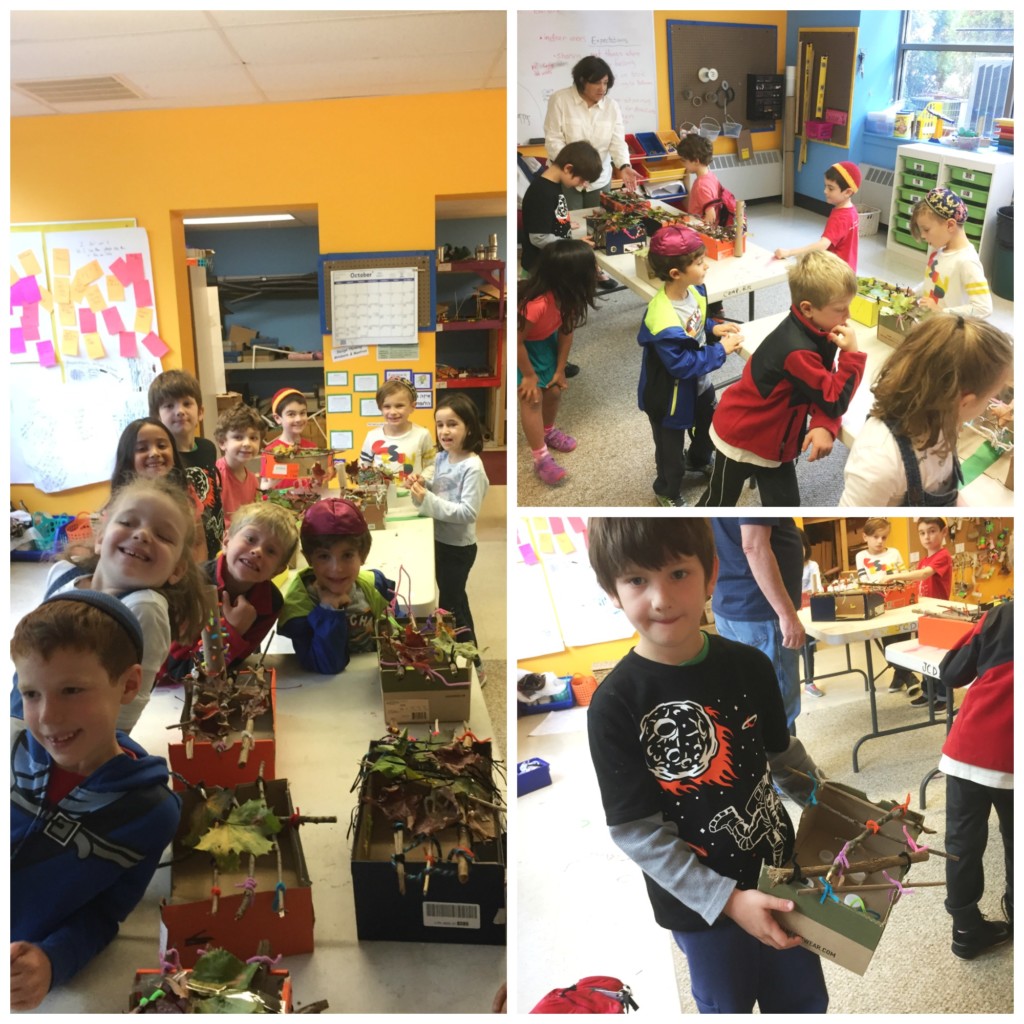
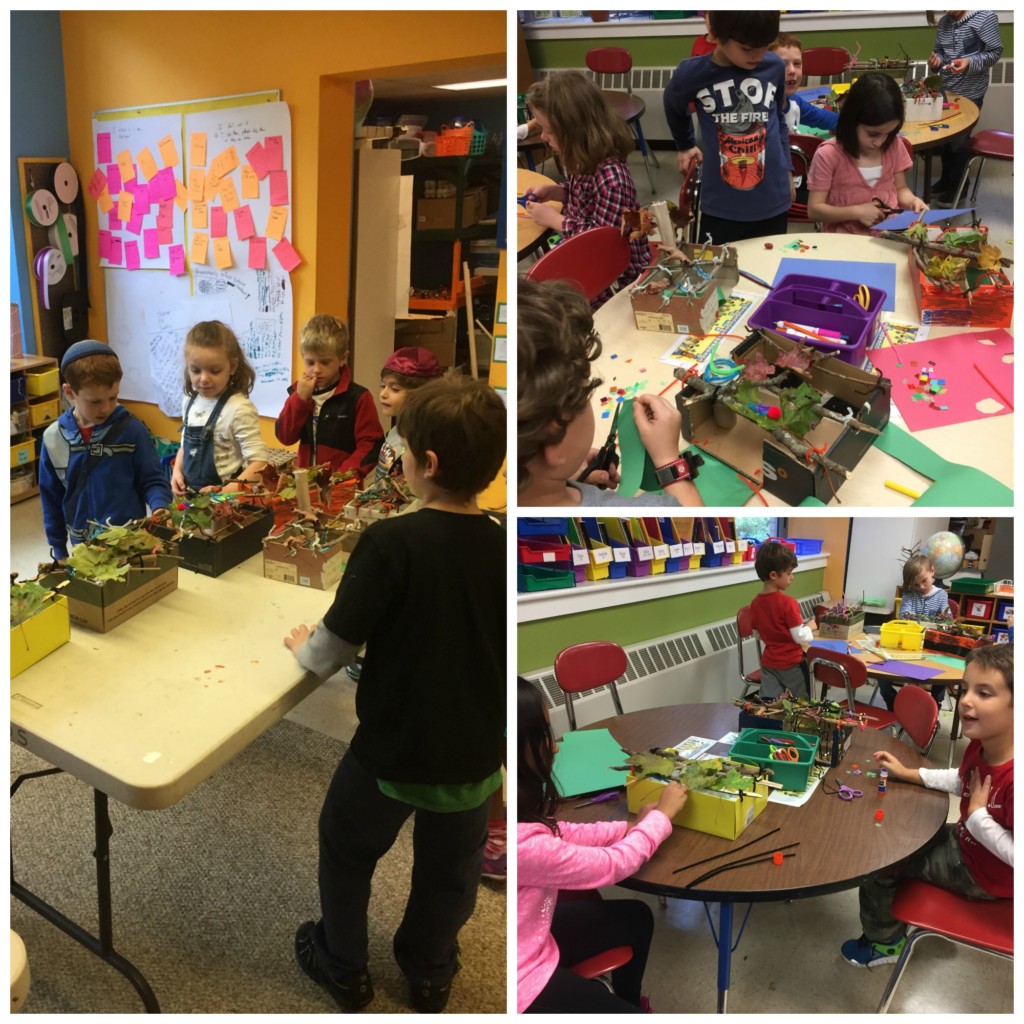

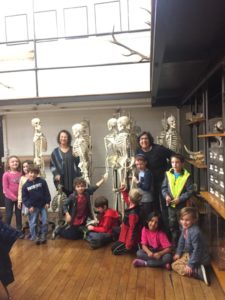 As part of “learning by doing,” first-grade scientists kicked off the unit on bones with a visit to the RISD Nature Lab. At the Lab, surrounded by skeletons, skins, seeds and shells, the students first observed specimens and then drew them. This visit and activity allowed us to actively study not only bones but also many other items, ranging from butterflies to minerals, and then to sketch them through “observational drawing.” On our visit, we touched many natural objects, such as spiders and snakes, and then organized and reflected on our obs
As part of “learning by doing,” first-grade scientists kicked off the unit on bones with a visit to the RISD Nature Lab. At the Lab, surrounded by skeletons, skins, seeds and shells, the students first observed specimens and then drew them. This visit and activity allowed us to actively study not only bones but also many other items, ranging from butterflies to minerals, and then to sketch them through “observational drawing.” On our visit, we touched many natural objects, such as spiders and snakes, and then organized and reflected on our obs